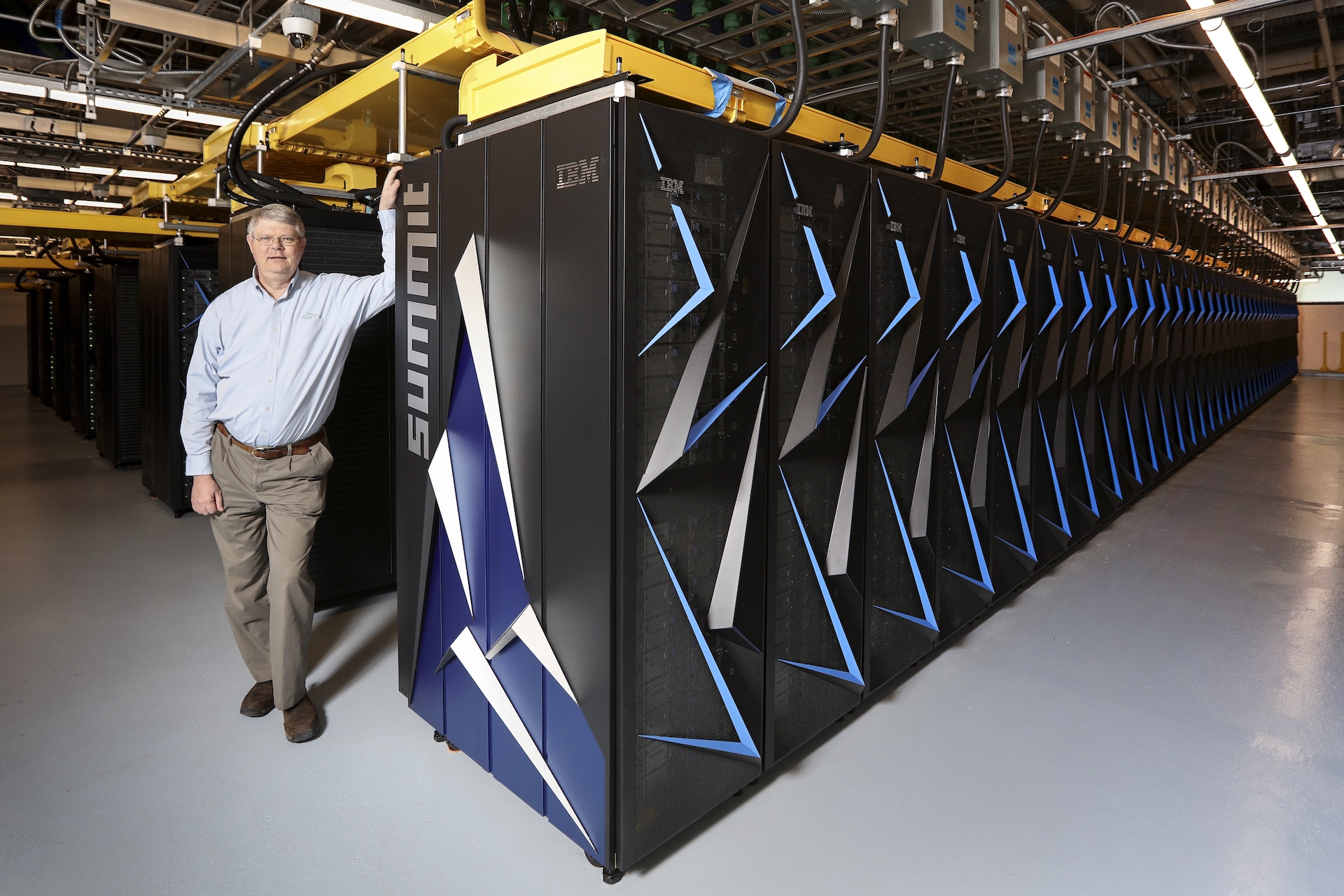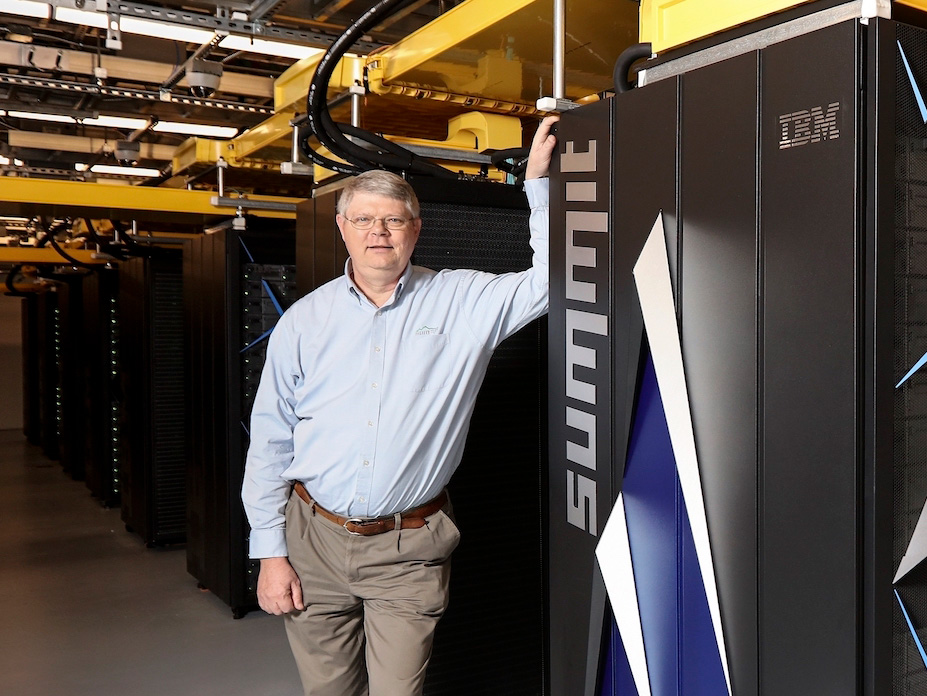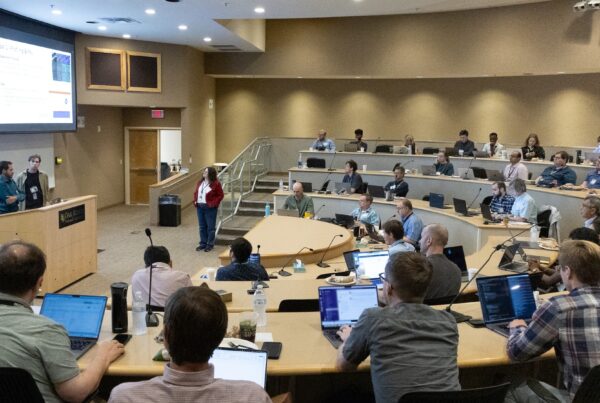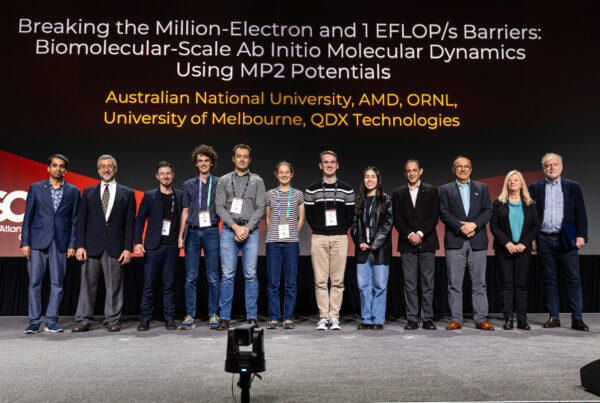
OLCF program director and project director for Summit, Buddy Bland has spent countless hours communicating and problem-solving with the system’s various stakeholders, including ORNL, DOE, and technology vendors IBM and NVIDIA, among others. On any given day at ORNL, Bland can be found participating in a project review, fielding updates from a vendor partner, or compiling material on behalf of DOE for a Congressional committee meeting.
The Faces of Summit series shares stories of the people behind America’s top supercomputer for open science, the Oak Ridge Leadership Computing Facility’s Summit. The IBM AC922 machine launched in June 2018.
With its recent launch, the Summit supercomputer, the Oak Ridge Leadership Computing Facility’s (OLCF’s) newest leadership-class system, offers unprecedented potential for solving problems in science and energy.
Summit follows in the footsteps of past breakthrough systems built and housed at the OLCF, a US Department of Energy (DOE) Office of Science User Facility located at DOE’s Oak Ridge National Laboratory (ORNL). That lineage includes the Jaguar and Titan supercomputers, which both enabled significant advances in scientific discovery while holding the title of “world’s most powerful supercomputer” at different times.
A common thread shared by these breakthrough systems is the leadership of former OLCF project director and current OLCF program director Buddy Bland, who has led the planning, coordination, execution, and deployment of every OLCF system since 2006.
Much like how parallel computers obtain faster results by divvying up computational tasks across many processors, deploying a new supercomputer requires coordination across many organizations and individuals, with activities ranging from infrastructure construction to hardware deployment to scientific application development.
“It takes hundreds of people to do this,” said Bland, who has played a role in launching and operating dozens of high-performance computing (HPC) systems during his 33 years at ORNL, beginning with a Cray X-MP in 1985.
In the ’90s, as Bland advanced to become director of operations of the Center for Computational Sciences (CCS), ORNL’s stature in scientific computing grew. Through the creation of the CCS, the laboratory helped DOE usher in the era of massively parallel computing in the ’90s and catapulted the US to the top of the HPC landscape with the formation of the OLCF in 2004.
Though a lot has changed in computing over the course of Bland’s career—notably, ORNL has overseen more than a billionfold increase in computing power—sound leadership and management remain central to conceiving the science machines of the future.
Empowering the People
As project director for Summit, Bland has spent countless hours communicating and problem-solving with the system’s various stakeholders, including ORNL, DOE, and technology vendors IBM and NVIDIA, among others.
The nature of the job requires a broad understanding of HPC and a strong grasp of the OLCF’s role within the DOE Office of Science, one of the largest supporters of scientific research in the US. Bland, a Mississippi native, has been honing both qualities dating back to his early ’80s stint at the Air Force Weapons Laboratory where he managed the Air Force’s first Cray-1 HPC system.
On any given day at ORNL, Bland can be found participating in a project review, fielding updates from a vendor partner, or compiling material on behalf of DOE for a Congressional committee meeting.
“The job is mostly about working with people and understanding what everybody needs to be successful—whether that be DOE, the lab, OLCF staff, or our vendor partners,” Bland said.
With Summit, the journey began in 2014 with a procurement process that resulted in an agreement with IBM to build a 200-petaflop supercomputer—a machine several times faster than anything that existed at the time. As with previous next-generation systems, Bland understood the significant levels of cross-organizational cooperation and dedication needed to ensure the machine met its lofty requirements, arriving on time and on budget, with scientists ready to use the system immediately. To add another layer of complexity, Summit would require its own computer room on the ORNL campus with increased power and cooling capacity.
Fortunately, Bland said, the OLCF possessed the people and the partners to carry out this gargantuan task in less than 4 years.
“The machine truly does get built for the very first time in our facility,” he said. “That means we must deal with all the issues that arise as we are standing up these large machines. Working with the team here at the OLCF and with our partners, understanding the problems they are seeing, and helping them address those problems, is particularly gratifying. We have great people who understand these systems at an extremely detailed level.”
Although he can hold his own with the experts, Bland also enjoys talking to the public—the people who ultimately fund the OLCF’s supercomputers—about the science enabled by these machines. It’s not uncommon to witness him speaking to visitors seeing a datacenter for the first time.
“I always like to talk to people,” he said. “I think it’s really important for us to make sure that everybody understands why we’re doing this, why it’s important, and what they get out of it.”
Preparing the Next Leaders
As the race for supercomputing supremacy enters its next phase, with countries like the US, China, and Japan vying to build an exascale supercomputer—a machine capable of a billion billion calculations per second—in the next 5 years, Bland is taking on a new leadership role: mentor.
Former OLCF deputy project director Justin Whitt is the lead project director for the acquisition of Frontier, one of three exascale machines planned by DOE, with Bland moving to the position of program director. The transition means that Bland can take a step back from the day-to-day demands of supercomputer procurement and devote more time to the overall health and mission of the OLCF.
“Though I don’t have the responsibility of bringing in the next big machine, I’ll still be around for a while,” Bland said. “We have a relatively young staff that has really grown in their understanding of leadership computing the last few years. Anything I can do to help prepare them for future projects is worthwhile.”
ORNL is managed by UT-Battelle for the Department of Energy’s Office of Science. The Office of Science is the single largest supporter of basic research in the physical sciences in the United States. DOE’s Office of Science is working to address some of the most pressing challenges of our time. For more information, please visit https://science.energy.gov.






